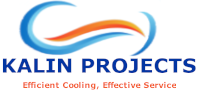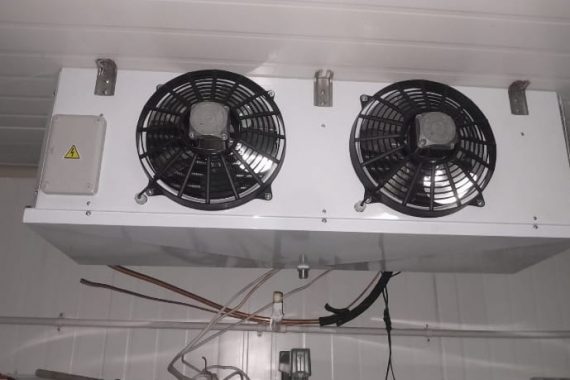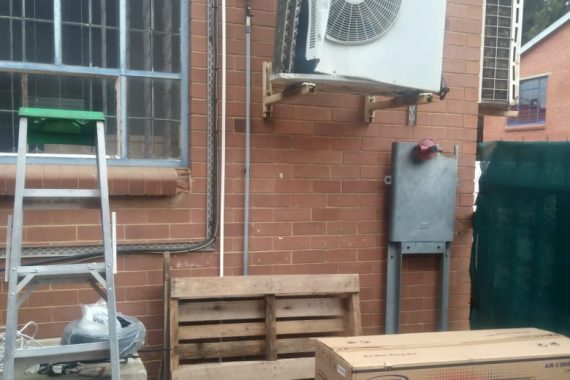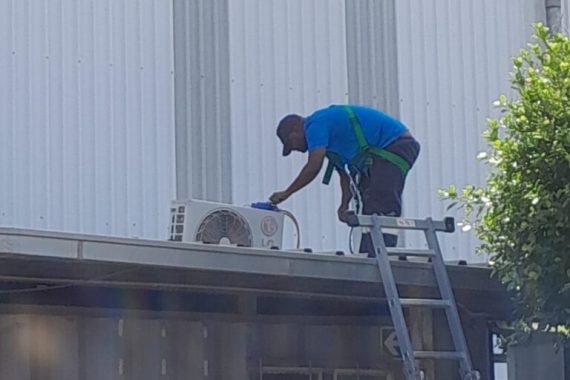HVAC Maintenance for One Of The Biggest Entities in The Country
Project # 200 HVAC Maintenance
Project
AT A GLANCE
| Project Type | HVAC Maintenance |
| Client Location | Rosherville Johannesburg |
| Duration | 2 Years |
| Project Size | More than 500 HVAC Systems |
Scope Of Work
This project involved the provision of comprehensive HVAC maintenance services at one of the key facilities of one of the biggest entities in the country. The objective was to ensure optimal performance, reliability, and efficiency of the HVAC systems critical to the operation of this major facility. Services included regular inspections, preventive maintenance, troubleshooting, and repairs of the HVAC equipment to minimize downtime and maintain a comfortable and controlled environment. By delivering meticulous maintenance services, the HVAC systems’ operational integrity was upheld, supporting the entity’s ongoing operations and contributing to overall facility management goals.
The client is a prominent entity with an extensive operational footprint, comprising more than 200 offices across various locations. Complementing its office network are 4 dedicated training centers, each spanning approximately 50 square meters, which support ongoing learning and development initiatives. The facility also features a canteen with 3 cold rooms and 3 freezer rooms for efficient food storage management. To facilitate flexible operations, the client utilizes 40 mobile offices. A conference center is also part of the facility, serving as a venue for meetings, events, and strategic gatherings. Additionally, the client operates an industrial area where chillers play a critical role in cooling machinery, ensuring operational efficiency and equipment longevity. The facility’s air conditioning infrastructure is characterized by a mix of older and newer systems, requiring careful management and maintenance to ensure consistent and reliable temperature control across all operational areas.
The facility faced significant operational challenges related to its temperature control systems. Specifically, the freezer rooms and cold rooms in the canteen were experiencing performance issues, failing to maintain optimal temperatures necessary to keep food fresh, which impacted food storage and safety. Additionally, older air conditioning units across the facility were not performing adequately, struggling to reach required temperatures for comfort and operational needs. In the industrial area, chillers used for cooling machinery were not functioning optimally, leading to machinery overheating. These issues collectively posed risks to operational efficiency, equipment longevity, and overall facility management.
To address the facility’s temperature control challenges, a comprehensive set of corrective actions was implemented. The blower in the freezer rooms was replaced to restore optimal performance and ensure proper food storage conditions. The condenser in the cold rooms was also replaced. Given that the previous contractor had utilized aluminum piping throughout the refrigeration system—a material less durable than copper for such applications—the entire piping was replaced with copper to enhance system reliability and longevity. In the industrial area, the chillers were repaired through the replacement of necessary parts to mitigate machinery overheating issues. Additionally, all old air conditioning units across the facility were replaced to ensure efficient and reliable temperature control in offices, training centers, mobile offices, the conference center, and other operational areas.
The corrective actions were executed in a phased approach to minimize operational disruptions while addressing the facility’s critical temperature control issues. Initially, the most urgent equipment needing replacement or repair was determined based on impact to operations, food safety, and machinery performance. With priorities established, the replacement of freezer blowers, cold room condensers, and the upgrade from aluminum to copper piping in refrigeration systems were carried out. Repairs to industrial chillers were conducted to prevent machinery overheating. All old air conditioning units were replaced to ensure reliable temperature control across the facility. Concurrently, a comprehensive maintenance schedule was drafted to ensure ongoing efficiency, reliability, and longevity of the upgraded and repaired systems, supporting the facility’s operational needs.
The implementation of the phased corrective actions yielded significant improvements in the facility’s temperature control and operational efficiency. With the replacement of critical components in the freezer and cold rooms, food storage conditions were restored to optimal levels, ensuring food safety and freshness. The upgrade to copper piping in refrigeration systems enhanced durability and reliability. Repairs to industrial chillers resolved machinery overheating issues, supporting uninterrupted operations in the industrial area. The replacement of all old air conditioning units ensured consistent and reliable temperature control across offices, training centers, mobile offices, and the conference center. The establishment of a comprehensive maintenance schedule is expected to sustain these improvements, contributing to overall facility management effectiveness and operational longevity.




